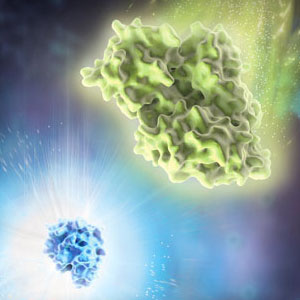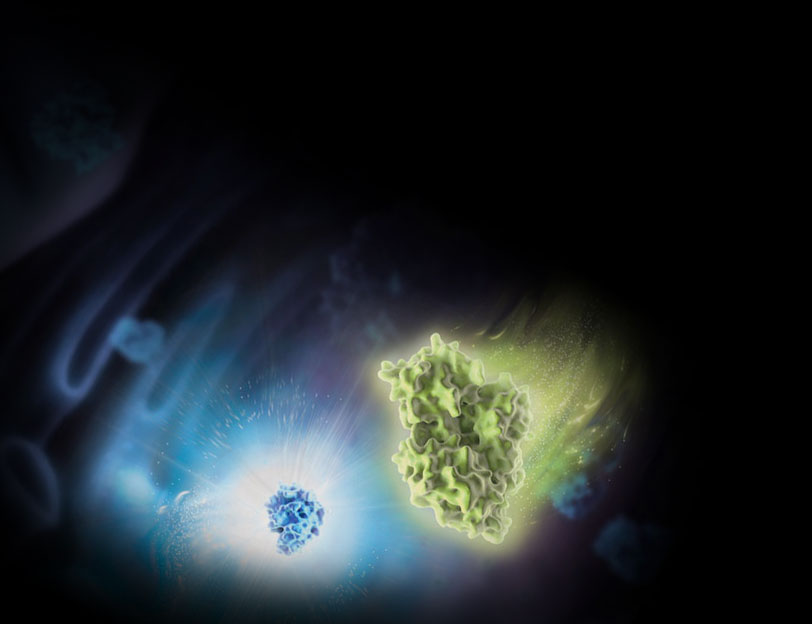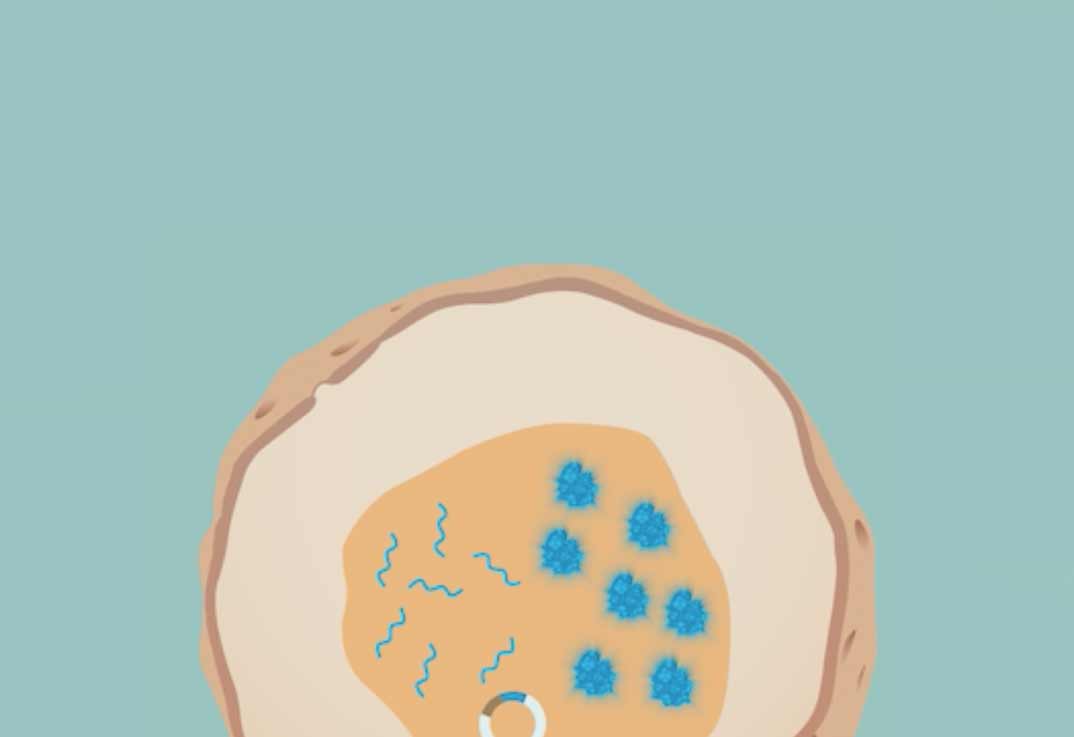Reporter Assays
A bioluminescent reporter assay consists of both a luciferase reporter enzyme and a detection reagent that provides the enzyme substrate. When the reporter enzyme and detection reagent are combined, the light emitted is proportional to reporter gene expression levels and is detected using a luminometer. We offer bioluminescent reagents for detecting NanoLuc®, firefly, and Renilla luciferases, with multiple detection reagent options for each enzyme to create a reporter assay optimized for specific experimental goals. The detection reagents have varying signal brightness and stability, include both lytic or live-cell options, and can provide either single- or dual-reporter detection.
Firefly luciferase can be paired with either NanoLuc® luciferase and assayed using the Nano-Glo® Dual-Luciferase® (NanoDLR™) Reporter Assay System, or paired with Renilla luciferase and detected using the Dual-Luciferase® Reporter Assay System. Using two genetic reporters creates a reporter assay that includes a normalization control or a second experimental reporter for more information per assay.
Filter By
Shop all Reporter Assays
Showing 30 of 30 Products
What are Reporter Assays?
Reporter assays provide a way to easily measure a biological response. There are many reporter genes available such as alkaline phosphatase, β-galactosidase, fluorescent proteins and luciferases. Luciferases are used to create bioluminescent reporter assays that are highly quantitative, sensitive across a broad dynamic range, and easily detected by measuring light output. There are many distinct bioluminescence classes, all based on the interaction of the enzyme luciferase with a luminogenic substrate to produce light. The luciferases that are used most widely in genetic reporter applications are beetle luciferases (including firefly luciferase), Renilla luciferase and a modified deep sea shrimp luciferase (NanoLuc® luciferase).
To create a luciferase reporter assay, the luciferase genetic reporter is introduced into a cell using methods such as transient or stable transfection. Intracellular luciferase is typically quantified by adding a buffered solution containing detergent to lyse the cells and a luciferase substrate to initiate the luminescent reaction. As few as 10–20 moles of luciferase or less per sample may be quantified. This corresponds to roughly 10 molecules per cell, giving luciferase assays a broad linear dynamic range for quantification. Secreted forms of luciferase can be measured by sampling the medium and running the luciferase assay in a separate plate. Some intracellular luciferases, such as NanoLuc® and Renilla luciferases, can be detected without cell lysis to create live-cell reporter assays that measure the kinetics of a cellular response.
Most reporter gene assays involve either one reporter gene or two. Most often, the second reporter is expressed from a "control" vector to normalize results of the experimental reporter. For example, the second reporter can control for variation in cell number or transfection efficiency. Typically, the control reporter gene is driven by a constitutive promoter, and the control vector is cotransfected with the "experimental" vector. Different reporter genes are used for the control and experimental vectors so that the relative activities of the two reporter products can be assayed individually. Visit the Reporter Assay Selection Guide for more information on how to select the best reporter assay for your needs.




